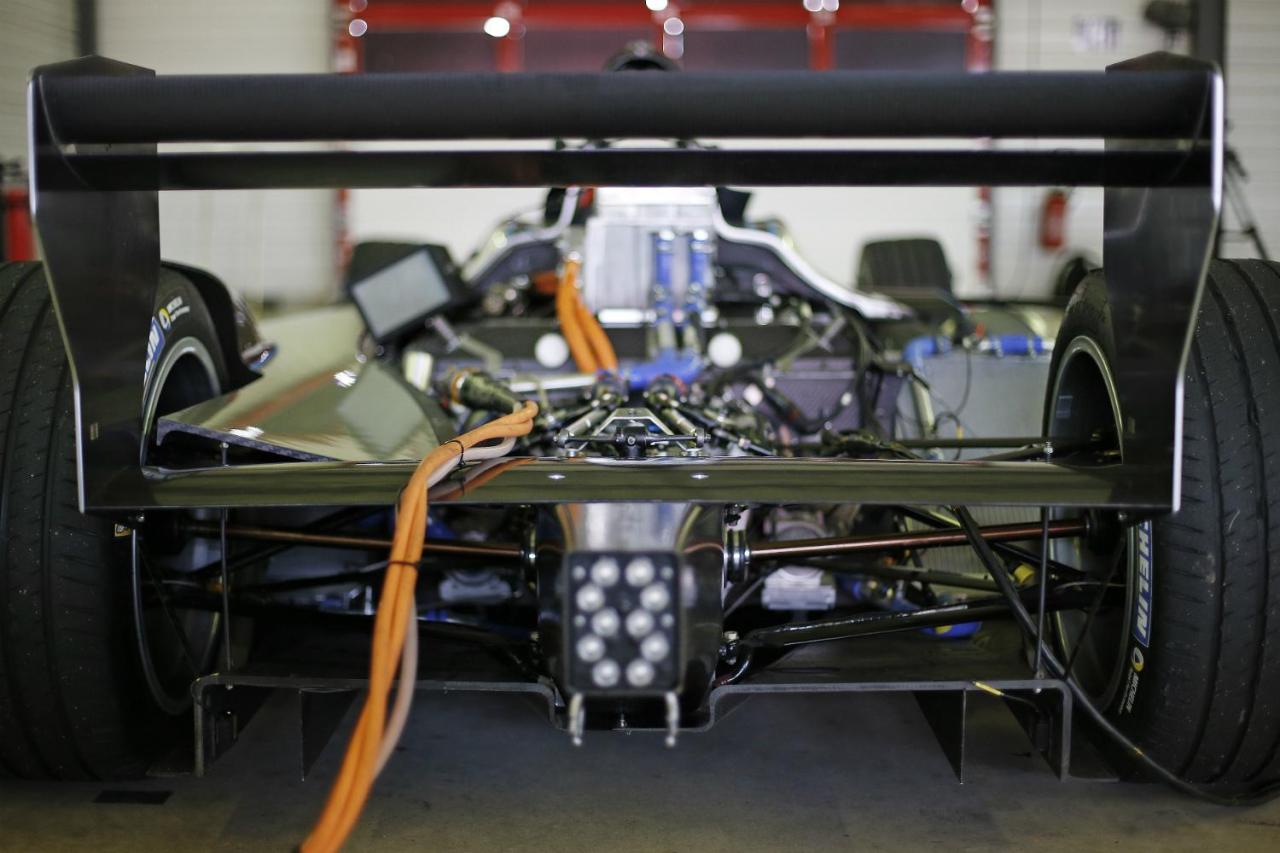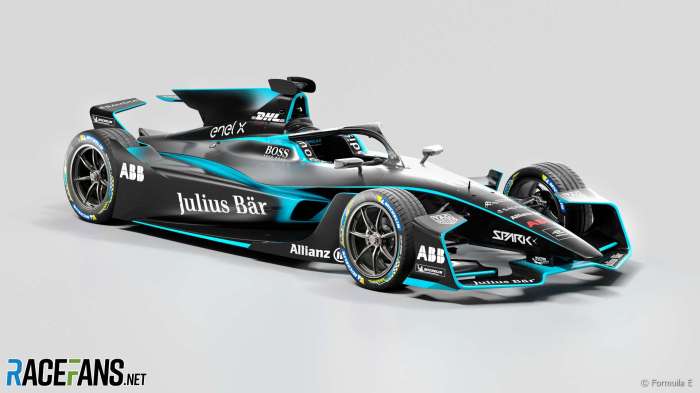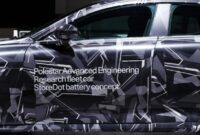Formula E racecars are transforming commercial EVs, pushing the boundaries of electric vehicle technology and inspiring a greener future. These high-performance machines are not just about speed and excitement; they serve as a living laboratory for innovation, showcasing the incredible potential of electric mobility.
From advanced battery technology and energy management systems to cutting-edge electric powertrains, Formula E is driving the development of features that are quickly making their way into the commercial EV market.
The impact of Formula E extends beyond the racetrack. Its high-profile events and global media attention are raising awareness and changing consumer perception of EVs. As more people witness the thrilling performance and environmental benefits of electric racing, the demand for sustainable transportation solutions is increasing.
Formula E’s Technological Advancements

Formula E, the all-electric racing series, has become a hotbed of innovation, pushing the boundaries of electric vehicle technology and accelerating the development of sustainable transportation solutions. These racecars serve as rolling laboratories, testing and refining technologies that are quickly finding their way into commercial electric vehicles.
Formula E’s Impact on Battery Technology
The demand for increased range and faster charging times in electric vehicles has spurred significant advancements in battery technology. Formula E has played a pivotal role in this evolution.
- High-energy density batteries:Formula E racecars utilize high-energy density batteries, which pack more power into a smaller space. This technology is being adapted for commercial EVs, leading to longer driving ranges and increased efficiency.
- Rapid charging:Formula E cars are designed for fast charging, enabling them to recharge quickly during pit stops. This technology is being integrated into charging infrastructure for commercial EVs, making it more convenient to charge on the go.
- Battery management systems:Formula E cars feature sophisticated battery management systems that optimize battery performance and extend battery life. These systems are now being used in commercial EVs to enhance their efficiency and reliability.
Performance and Efficiency

Formula E racecars, despite their smaller size and electric powertrains, deliver thrilling performance that rivals traditional combustion-powered race cars. This performance, however, is achieved through a keen focus on efficiency and energy conservation, showcasing the potential of electric vehicles for everyday use.
Performance Comparison
Formula E racecars are designed for maximum performance within the constraints of limited battery capacity. They boast impressive acceleration, reaching 0-100 km/h in under 3 seconds, and top speeds exceeding 280 km/h. This performance is comparable to high-performance gasoline-powered cars, demonstrating the potential of electric powertrains for delivering exhilarating driving experiences.
Efficiency and Energy Conservation
Formula E prioritizes efficiency and energy conservation, which translates directly to real-world applications. Race strategies revolve around managing energy consumption, optimizing regenerative braking to recapture energy during deceleration, and utilizing lightweight materials to minimize energy expenditure. These strategies contribute to the development of more efficient and sustainable electric vehicles for everyday use.
Obtain a comprehensive document about the application of compensation benefits trends that is effective.
Performance and Efficiency Comparison
The following table compares the range, acceleration, and charging times of a Formula E car to a comparable commercial EV:| Feature | Formula E Car | Commercial EV ||—|—|—|| Range | 45-50 km (race distance) | 300-500 km (real-world range) || Acceleration (0-100 km/h) | < 3 seconds | 4-7 seconds | | Charging Time | 5-10 minutes (fast charging) | 30-60 minutes (fast charging) | While Formula E cars have shorter ranges due to their focus on performance, the advancements in battery technology and charging infrastructure are rapidly bridging the gap with commercial EVs. The efficiency strategies employed in Formula E are already being incorporated into commercial EVs, leading to increased range, faster charging times, and improved performance.
Sustainability and Environmental Impact: Formula E Racecars Are Transforming Commercial Evs

Formula E, with its electric racecars, represents a significant step towards a more sustainable future in motorsport.
Unlike traditional racing series that rely on fossil fuels, Formula E champions clean energy and aims to reduce its environmental footprint.
Environmental Benefits of Electric Racing
The shift from gasoline-powered cars to electric vehicles is a crucial step in combating climate change. Formula E, by using electric racecars, significantly reduces emissions compared to traditional motorsports.
- Electric racecars produce zero tailpipe emissions, eliminating the release of harmful pollutants like carbon dioxide, nitrogen oxides, and particulate matter.
- The use of renewable energy sources to power the racecars and infrastructure further reduces the carbon footprint of Formula E events.
- Electric racing also contributes to noise reduction, minimizing the impact of loud engine noise on surrounding communities.
Formula E’s Sustainable Practices
Formula E is committed to promoting sustainable practices beyond its racecars.
- The series uses recycled materials in its infrastructure and actively promotes waste reduction at its events.
- Formula E also prioritizes sustainable transportation solutions, encouraging the use of public transport and electric vehicles by spectators and team personnel.
- The series partners with organizations dedicated to environmental conservation and promotes awareness of climate change issues.
Electric Racing’s Influence on EV Adoption
Formula E serves as a platform to showcase the performance and efficiency of electric vehicles, inspiring wider adoption of EVs in the automotive industry.
- The thrilling races and technological advancements in Formula E demonstrate the capabilities of electric vehicles, dispelling misconceptions about their performance and range.
- The series attracts global attention and provides a platform for manufacturers to showcase their electric vehicle technology, encouraging investment and innovation in the EV sector.
- Formula E’s success and popularity can influence consumer perceptions of electric vehicles, promoting their adoption as a viable and sustainable alternative to gasoline-powered cars.
The Future of Electric Mobility
Formula E, the world’s first all-electric racing series, is not just a sport; it’s a powerful catalyst for the future of electric mobility. By pushing the boundaries of electric vehicle technology, Formula E is accelerating the transition towards a cleaner, more sustainable transportation future.
A Timeline of Electric Vehicle Development
Formula E has played a significant role in shaping the trajectory of electric vehicles. The series’ commitment to innovation and technological advancement has accelerated the development of key technologies that are now finding their way into commercially available EVs. Here’s a timeline highlighting some of the key milestones in the evolution of electric vehicles, with a focus on Formula E’s contributions:
- Early 19th Century:The first electric vehicles were invented, but limited by battery technology and range.
- 1990s:Advancements in battery technology and the rise of environmental concerns reignited interest in electric vehicles. Companies like General Motors and Toyota introduced early electric car models.
- 2014:Formula E was launched, marking the beginning of a new era for electric racing and showcasing the potential of electric vehicles on a global stage.
- 2016:Formula E introduced the Gen2 car, featuring significant improvements in battery technology, performance, and range.
- 2022:The launch of the Gen3 car, featuring increased power, efficiency, and sustainability, further propels the development of electric vehicle technology.
Formula E’s Impact on Commercial EVs
Formula E’s technological advancements are having a direct impact on the development of commercial electric vehicles. The series serves as a testing ground for cutting-edge technologies, including:
- Battery Technology:Formula E has been instrumental in driving advancements in battery density, charging speed, and overall performance. These improvements are directly translating into longer ranges, faster charging times, and better performance in commercially available EVs.
- Electric Motors:The high-performance electric motors developed for Formula E cars are being adapted for use in commercial vehicles, contributing to increased power and efficiency.
- Regenerative Braking:Formula E cars heavily utilize regenerative braking, which captures energy during braking and converts it back to electricity, extending range and improving efficiency. This technology is now being widely adopted in commercial EVs.
- Lightweight Materials:The use of lightweight materials, such as carbon fiber, in Formula E cars has led to advancements in reducing vehicle weight, improving performance, and extending range. These innovations are being applied to commercial EVs to improve their overall efficiency.
Expected Impact of Formula E on the Electric Vehicle Industry
Formula E’s influence on the electric vehicle industry is expected to continue growing in the coming years. Here’s a table outlining the anticipated impact:
| Area | Impact |
|---|---|
| Technology Advancement | Continued advancements in battery technology, electric motors, regenerative braking, and lightweight materials, leading to more efficient, powerful, and sustainable EVs. |
| Consumer Adoption | Increased awareness and interest in electric vehicles, driven by the excitement and innovation showcased in Formula E. |
| Infrastructure Development | Acceleration in the development of charging infrastructure, both public and private, to support the growing number of electric vehicles. |
| Environmental Sustainability | Promotion of electric vehicles as a cleaner alternative to traditional gasoline-powered vehicles, contributing to the reduction of greenhouse gas emissions and air pollution. |
The Impact on Consumer Perception
Formula E’s electrifying racing not only pushes the boundaries of motorsport but also has a profound impact on consumer perception of electric vehicles. By showcasing the performance and capabilities of electric vehicles on a global stage, Formula E is changing how people view this emerging technology.
Formula E’s Performance Showcase
Formula E’s high-performance racing serves as a powerful platform to demonstrate the capabilities of electric vehicles. The sleek, aerodynamic racecars, powered by cutting-edge battery technology, achieve speeds exceeding 200 km/h (124 mph), proving that electric vehicles can deliver thrilling performance on par with traditional gasoline-powered cars.
Formula E’s Global Reach and Media Attention
Formula E’s races are held in iconic cities around the world, attracting millions of viewers and generating significant media attention. This global reach amplifies awareness of electric vehicles, introducing them to a wider audience and fostering a positive perception of their potential.
Formula E’s Brand Associations and Driver Influence, Formula e racecars are transforming commercial evs
Formula E has partnered with prominent brands and drivers, further shaping consumer perception of electric vehicles. These partnerships lend credibility and prestige to the sport and its associated technology. High-profile drivers, known for their racing prowess, become advocates for electric mobility, influencing their fans and inspiring a broader adoption of electric vehicles.





